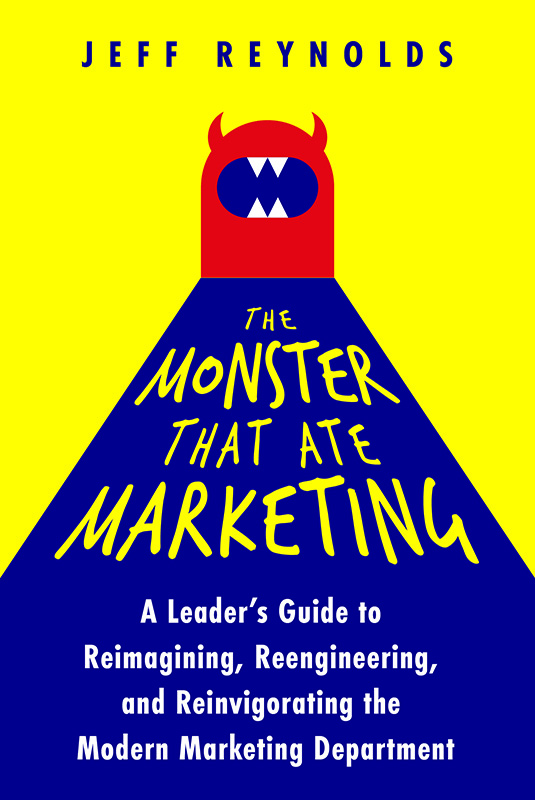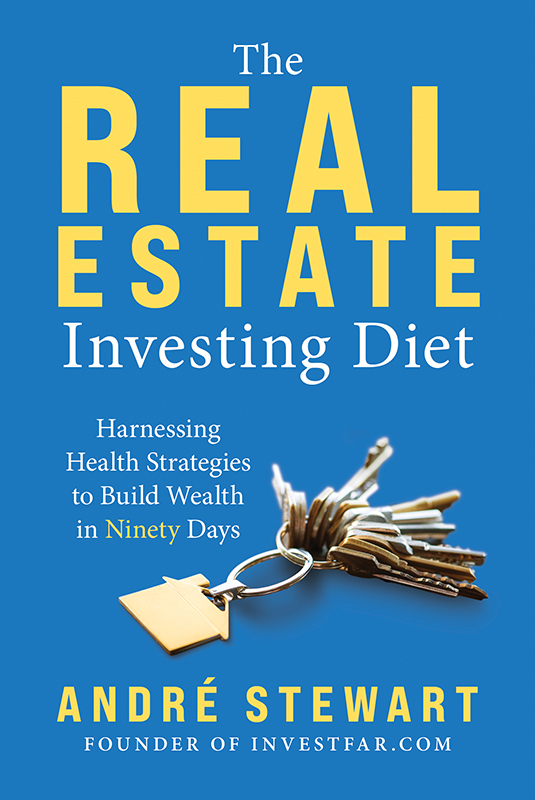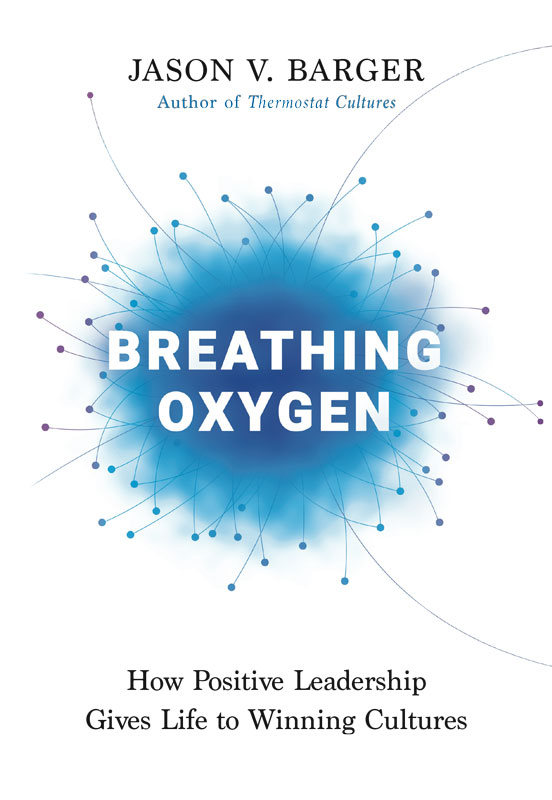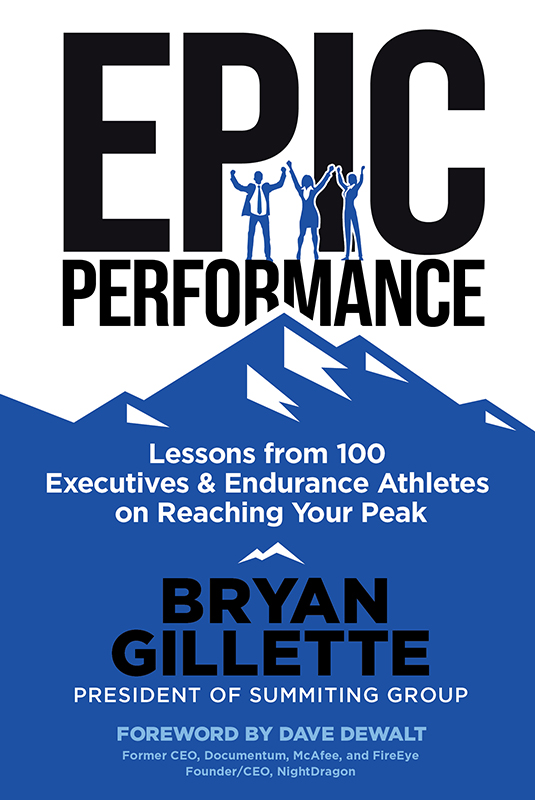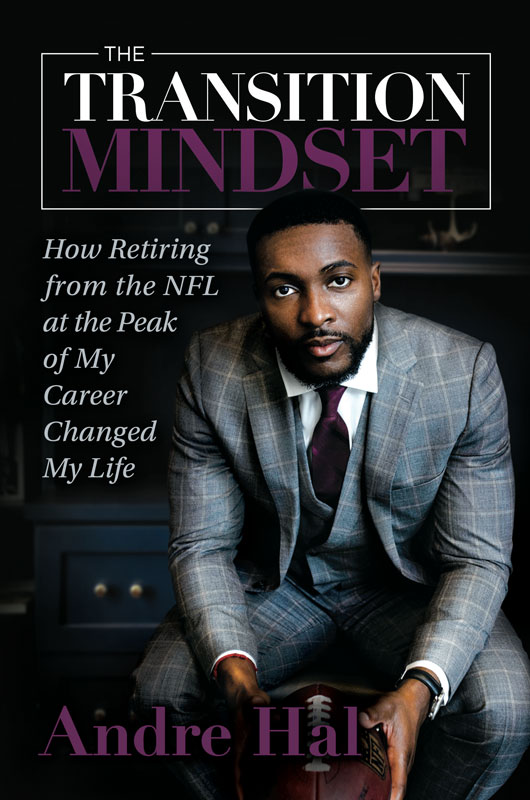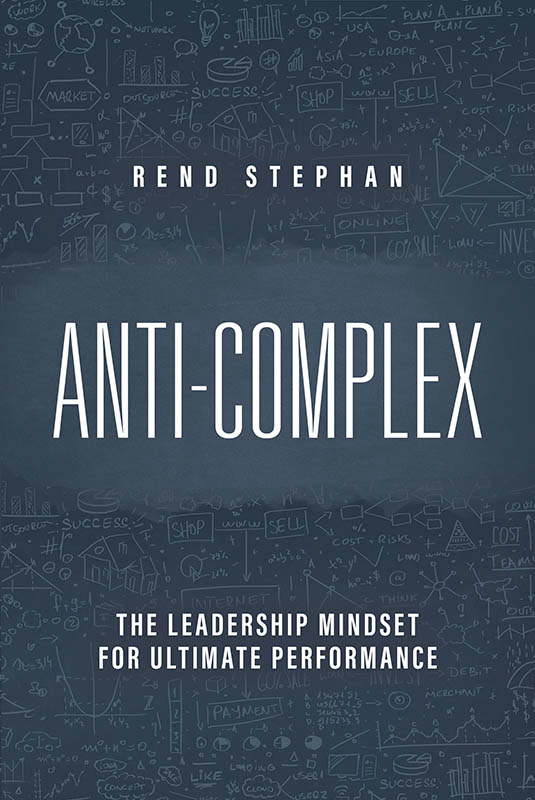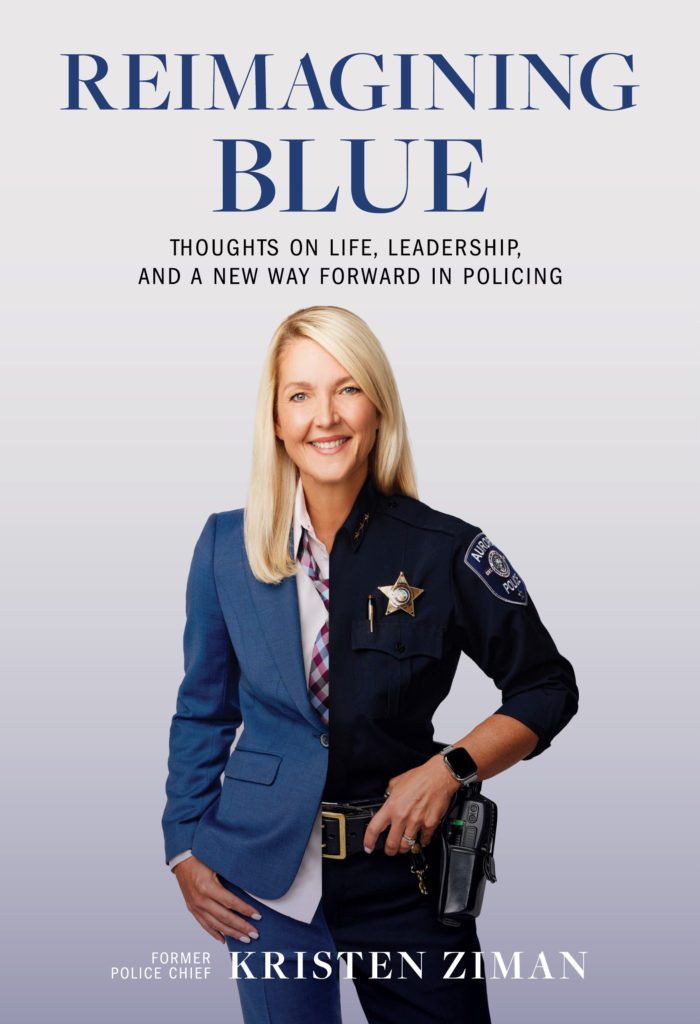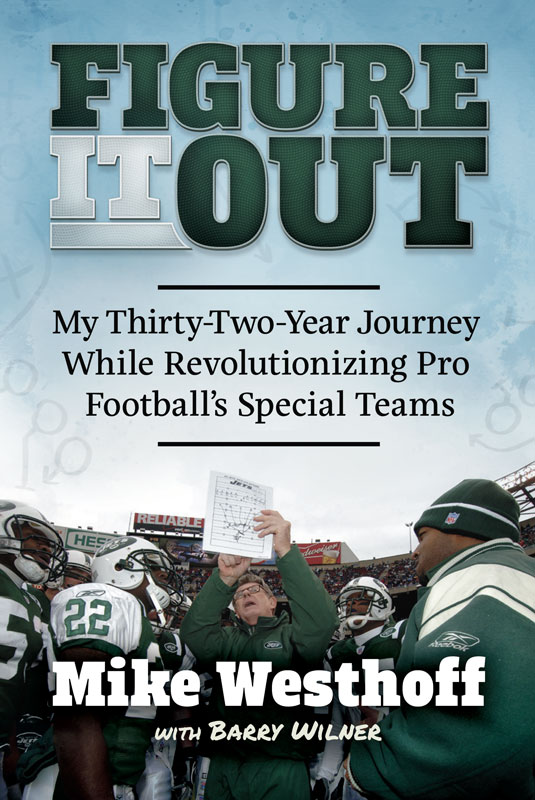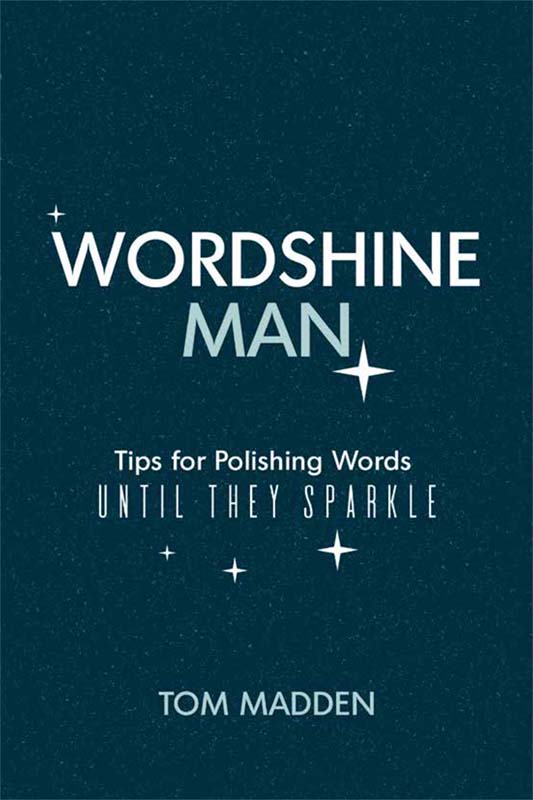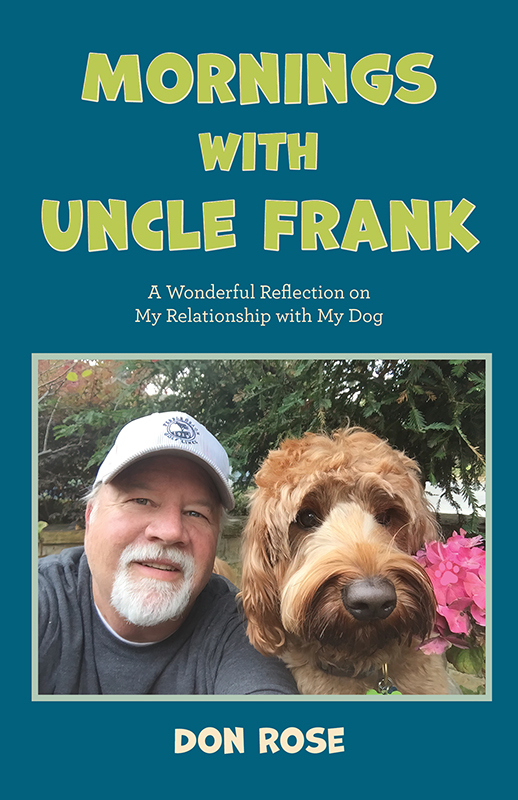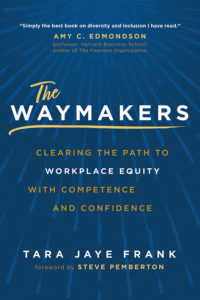Announcing Our Next Chapter
(Posted on Tuesday, August 9, 2022)
We’re thrilled to announce the next chapter of Amplify Publishing’s story: for the first time, our six imprints have been brought under the umbrella of Amplify Publishing Group (APG). With this rebrand comes fantastic additions to our leadership team, a comprehensive new website dedicated to the APG mission, and upcoming initiatives that further our commitment to providing the best author services in the industry.
Joining our board as chairman is Josh Linkner. Linkner is the founder and CEO of five tech companies, an internationally recognized expert on innovation, a New York Times bestselling author, and the founder of ImpactEleven, an industry-leading keynote speaker training organization. With significant contributions and experience in business development, Linkner is looking forward to helping shape the next generation of APG authors.
Eric Schurenberg will also be joining APG’s board as editor-in-chief. Schurenberg is a media executive, award-winning journalist, and the former CEO of Mansueto Ventures, which owns Inc. and Fast Company media properties. Dedicated to fighting misinformation and polarization, Schurenberg has a vested interest in acquiring business, politics, and other thought-provoking titles.
From humble beginnings to our new leadership team, we’ve come a long way. We were founded in 2003 with the publication of a single book by our CEO, Naren Aryal. In the twenty years since, we have published bestselling titles by thought leaders, changemakers, and subject matter experts; secured coverage in major news outlets such as the New York Times, Wall Street Journal, Forbes, Time, Business Insider, and Good Morning America, among others; and established ourselves as a premier hybrid publisher.
Through our evolution, APG has been and continues to be dedicated to amplifying voices that need to be heard. We’re proud of the books we’ve published and the authors we’ve supported over the last twenty years, and we’re looking forward to the decades to come.
Our new website is home to information about our publishing process and comprehensive services, our six imprints, and our many exceptional authors. The new APG bookstore includes Amplify Publishing, RealClear Publishing, and Tagged Publishing front and backlist titles, while our Mascot bookstore includes titles from Mascot Books, Mascot Kids, and Subplot Publishing.
To join us on this new chapter of our journey, follow us on social media or explore our website.
August 2022 New Releases
(Posted on Tuesday, August 2, 2022)
The newest releases from Amplify Publishing are available today in our bookstore. Whether it is a little tongue-in-cheek humor to help leaders reinvent marketing, tips on how to invest in real estate, or positive leadership methods, this month’s books are ready to help you become the best version of yourself.
July 2022 New Releases
(Posted on Tuesday, July 12, 2022)
Readers of our blog will remember that last month’s new releases touched on themes of introspection and nostalgia. This month, our new titles continue on that path and focus on meaningful reflection. Whether on the past, relationships, word choice, or actions, the midway point of 2022 is the perfect time for contemplation.
As always, please leave us comments below or review this month’s books on your favorite platform; we love to hear from readers, and our authors do too!
Amplify Publishing
We’re kicking our July titles off with Reimagining Blue from Amplify Publishing. Written by former Aurora, Illinois, police chief Kristen Ziman, this captivating memoir shares details of Kristen’s life and upbringing, her time in the police force and the many challenges she faced, and her thoughts on the way forward for policing.
Mascot Books
At Mascot Books, we’re releasing four new nonfiction titles. From a multigenerational story about a legendary Hungarian family, to one man’s account of his bond with his dog, to the life story of renowned NFL coach Mike Westhoff, this month’s memoirs are insightful, heartfelt, and incredibly honest. And topping things off, we’re releasing a guide that helps readers improve their writing and learn how to make words shine. No two stories are the same, but these four books show that we can always learn from each other’s journeys.
What Our Staff is Reading in June
(Posted on Friday, June 10, 2022)
There’s nothing everyone loves more than finding a good book to read on your porch, the beach, or even your couch in the summer. And our staff is no exception. Everyone has been busy diving into new books outside of office hours, and this month we are sharing not only what we are reading but also some of our thoughts on our choices.
Our CEO, Naren, is currently reading The Power of Conflict: Speak Your Mind and Get the Results You Want by Jon Taffer. Taffer believes the key to a happy workplace is to embrace conflict and give it purpose. Though we consider our office to be a constructive and supportive environment, we look forward to Naren sharing Taffer’s toolkit with our staff.
To find out what the rest of our staff is reading, check out the list below.
Acquisitions
Ben didn’t have a theme for the books he read in May, but two of his favorites were A Very Punchable Face by Colin Jost and Billion Dollar Loser: The Epic Rise and Spectacular Fall of Adam Neumann and WeWork by Reeves Wiedeman. So far, he has finished 42 books this year and is well on his way to hitting his goal of reading 100 books in 2022.
Jess just finished What I Was Doing While You Were Breeding by Kristin Newman, a travel memoir from a television writer that is equal parts hilarious and heartbreaking. Jess related to using travel as medicine and found it bittersweet to read the story post-COVID when travel remains very different. She would recommend it to anyone who is nostalgic about the early to mid-2000s or is a solo traveler looking for empowerment.
Kortney is reading The Last Story of Mina Lee by Nancy Jooyoun Kim for her book club. She has just started and will share her thoughts next month!
Production
Aditya is reading Burnt Sugar by Avni Doshi, a literary debut about mothers and daughters set in India, and If An Egyptian Cannot Speak English by Noor Naga, a novel about love as a weapon of empire.
Gillian is reading the The Summer I Turned Pretty series by Jenny Han, which is about a teenage girl growing up over the course of three summers. Gillian would recommend this series to people who want a quick YA beach read or who like watching TV show adaptations, as the series was just adapted by Amazon!
Jenna is leaning into summer thrillers and recently finished The Golden Couple by Greer Hendricks and Sarah Pekkanan, and is currently reading The Wife Between Us by the same authors. She is also currently reading Hooked: How Crafting Saved My Life by Sutton Foster, one of Jenna’s theater idols, who also attended her high school.
Tyler is currently enjoying Homesick For Another World by Ottessa Moshfegh. It is a collection of unsettling (and sometimes depressing or frustrating) short stories.
Graphic Design
Caitlin is listening to the audiobook edition of The Hate U Give by Angie Thomas and recommends it! “The characters feel real and authentic, and the story is incredibly eye-opening.”
David is reading SMASH! Green Day, The Offspring, Bad Religion, NOFX, + the ’90s Punk Explosion by Ian Winwood and says, “If you love ’90s punk, you should definitely read this.”
Matt is reading Scoundrels, Cads, and Other Great Artists by Jeffrey K. Smith and describes it as “almost like the art history version of TMZ.” He’d recommend it to art fans who want to learn more about the drama and wild lives of famous artists.
Marketing
Caitie is reading Six of Crows by Leigh Bardugo and Homegoing by Yaa Gyasi. She would recommend Six of Crows if “you like found families, heists, and a little bit of romance set in a fantasy world. I had a hard time putting this down!”
Heather just finished Sea of Tranquility by Emily St. John Mandel. This “gem of a novel” weaves literary and speculative fiction together. Next on her list is Great Circle by Maggie Shipstead.
Kat is currently in “research mode” and is reading The Story of Egypt by Joann Fletcher. When she needs a break, she plans to read Once & Future by A. R. Capetta and Cory McCarthy.
Michelle is reading Just One Look by Lindsay Cameron and The Photographer by Mary Dixie Carter—two “weird, creepy stories about obsession.” She’d highly recommend The Photographer to anyone who’s a fan of disturbing psychological thrillers. “The protagonist is compelling, manipulative, unreliable, and a little unhinged, which I personally love in a book.” This was a page-turner that Michelle had a hard time putting down.
Sky is reading Alien Virus Love Disaster by Abbey Mei Otis. She bought it recently on a trip to Asheville, North Carolina, where she visited Malaprop’s Bookstore and Alien Virus Love Disaster was a blind date with a book! It ended up being perfect for her trip as the short stories made it easy to read in bits and pieces while she traveled. “The stories are strange, topical, and dark. Recommended for fans of Parable of the Sower, Margaret Atwood, Brave New World.”
Taylor just finished The Diamond Eye by Kate Quinn. This is her fourth book by Quinn, and each read has been just as good as the last. She has a hard time putting these stories down and is constantly encouraging her friends, family, and you to read them.
Bookkeeping
Alison is reading The Forgetful’s Reminders On Love, Loss, Lunacy & Leaving by Tom Rush. It is a collection of song lyrics and poetry written by one of her friends from college.
Emily has just finished a book and is looking forward to starting The Book of Cold Cases by Simon St. James!
Helen is still reading The Hobbit by J.R.R. Tolkien and loving it. She said, “It’s a wonderful story and has great detail. However, Tolkein can be a bit long winded in his descriptions.” And being the tome that it is, she has also started B is for Burglar by Sue Grafton for when she needs a break.
We will see you next month with more books from the office. In the meantime, what are you reading? Leave your answers in the comments here or on social media! You can also see our June reads and past selections in our Bookshop store.
June 2022 New Releases
(Posted on Tuesday, June 7, 2022)
Often, our new releases find a serendipitous harmony. This month, many of our latest books revolve around introspection and reflection. Whether it is parents teaching their children about loss and sharing nostalgia for the past, or adults meditating on life or financial concerns—with so much going on in the world, everyone needs to step back and look inward once in a while. Take a moment now to explore our June releases from our Amplify Publishing.
As always, please leave us comments or reviews of this month’s books; we love to hear from readers, and our authors do too!
Amplify Publishing
Women Wise: The Essential Guide to Financial and Lifestyle Decisions as We Age by Eleanor Blayney and Marjorie L. Fox is our latest Amplify release. This project is the culmination of a collaboration between financial experts Blayney and Fox, our Amplify team, and our CEO Naren Aryal. Finances can be challenging, especially as we age, but Fox and Blayney have created the essential guide to women’s financial decisions. As they say, “when it comes to retirement advice, one size does not fit all.”

May 2022 New Releases
(Posted on Tuesday, May 3, 2022)
For many, May is a period of renewal and taking things slowly—when it isn’t quite summer yet, but you’re feeling the warmth of spring. The books below will keep readers occupied, entertained, and learning throughout the month and into the summertime. As always, please leave us comments or reviews of this month’s books; we love to hear from readers, and our authors do too!
RealClear Publishing
With the emergence of COVID-19 in 2020, healthcare has become one of the most salient issues in our country—both for everyday people and policymakers. And with that, questions continue to arise about how to navigate US healthcare and insurance plans. In his new book The Healthcare Labyrinth: A Guide to Navigating Health Plans and Fixing American Health Insurance, health plan expert Marc S. Ryan outlines how to navigate this complicated system and offers pathways to reform for our seemingly broken healthcare system.
Amplify Publishing
The discussion about healthcare continues with one of our Amplify titles, Cutthroat, although Dr. Steven J. Cyr approaches it from the perspective of a doctor trying to make things work within the world of big government healthcare. The three other Amplify books, The Waymakers, Why I Find You Irritating, and The Potentialist examine how individuals can succeed, despite hardships in their lives and work. The Waymakers looks at how people have been helped along the way and how future leaders can do the same for those who come after them. The Potentialist dives into individual potential and makes sure everyone has the tools to reach their full potential. And Why I Find You Irritating helps you navigate challenging relationships at work.
What Makes a Good Interior Design? What to Expect During the Design Process
(Posted on Wednesday, March 24, 2021)
Once the writing and editing of your book have been completed and a cover concept selected, the next step is solidifying an interior design. Though interior design may seem straightforward, the process is far more intentional than simply placing words onto pages and starting the presses. A strong interior design should always complement the cover design, and takes into account content, genre, and any included graphics. Making reading an easy and pleasurable experience is why design is an important step in the publishing process.
So, what are the nuts and bolts that make up a strong interior design? There are several hallmarks to keep in mind.
Reads Well. Readability is the ultimate goal for a book’s interior and, as previously mentioned, a good design will allow the reader to effortlessly fly through the pages. Crowded text, messy graphics, and not enough visual negative space yields to a cumbersome reading experience. A good balance between visuals, negative space, and appropriate font selection ensures an approachable book that encourages readers to keep reading and communicates information effectively.
Complements Cover Design. The interior should be a natural extension of the cover, and as such, their styles should complement each other. You don’t want your reader to open your book and be surprised by what they see. An example of good design is in Melissa Agnes’s book, Crisis Ready: Building an Invincible Brand in an Uncertain World, which uses negative space to convey peace and calm on the cover and interior.
Follows Industry Trends. An outdated interior design is a sure way to immediately convey to the reader that your content may be antiquated as well. A modern interior design that is indicative of your content and genre is always recommended.
Producing a finalized set of files that are printer-ready requires several rounds of editing. After the cover has been completed, the design team lays out the first few chapters of the book into a sample interior design, called a test layout. The design team and the author discuss any edits to be made before the team locks in the design. Then, it’s on to the full book layout.
Once the full manuscript is laid out according to the agreed-upon design, the author is given the opportunity for one final read-through for any final, minor changes. In-line changes to the text are accepted here, but major rewrites are highly discouraged (and sometimes impossible without re-laying out the book). Too many significant changes disrupts the design process, slows down production, and can cause reflow from page to page.
Once all final edits are incorporated and the files have been signed off on, the book is ready to go to the printer.
Interior Design In-Depth
Major design elements include font, font size, header selection, chapter openers, running footers, and other stylistic elements (if applicable) such as charts, graphs, and photos. Your publisher will likely provide you with their recommendations in each of these areas. An experienced design team will have experience working with all these elements, and come up with a design tailored to your book’s needs.

As the CEO at Amplify Publishing, RealClear Publishing, and Mascot Books, Naren Aryal advises authors, thought leaders, and organizations on the opportunities and challenges that exist in the evolving publishing world. He’s guided the company’s growth from a single children’s book in 2003 to becoming one of the fastest growing and most respected hybrid publishing companies in the world. Today, Amplify Publishing is a leading nonfiction imprint specializing in “big ideas” from experts in business and politics, and Mascot Books publishes hundreds of books a year across all genres. RealClear Publishing, a joint venture with RealClearPolitics, redefines the political book marketplace by magnifying the voices of senators, advocates, and analysts to shape the national conversation.
Prior to entering the world of books, Naren worked as a lawyer, advising technology companies in the Washington, D.C. area. He holds a B.S. in Finance from Virginia Tech and Juris Doctor from University of Denver. Naren frequently speaks at publishing and business events about the importance of developing compelling content and a robust author platform. He is also the author of How to Sell a Crapload of Books: 10 Secrets of a Killer Author Marketing Platform.
Indexing: Turning a Book into a Timeless Resource
(Posted on Monday, January 25, 2021)
A potential reader searching for a book on particular topics and wanting to know how deeply a book covers them will often look at the index. An index gives the reader a sense of the breadth of topics—all the way down to the specifics—that they’ll benefit from, as well as serves as a useful reference for interacting with the book for years to come. It may be an important part of a reader’s decision to add the book to their shopping cart and pick it up again after their initial read, increasing its value over its lifetime.
Books that benefit from an index
Indexes are typically found in nonfiction books, especially those that include reference or technical material. If a title includes topics specific to a certain subject area or industry that the reader may want to return to for quick reference, or if the title includes important keywords that could be used for research, the author should consider including an index. Not all nonfiction titles need an index, however. Narrative nonfiction titles, such as memoirs, do not require one as they do not serve as resource material.
The indexing process
The indexing process is one of the final steps in production before the book is sent to the printer. Indexing can only occur once the full PDF is finalized as final page numbers are needed in order to produce a properly paginated index. Changes after the indexing process is complete could result in layout reflow, causing key terms to shift to different pages and rendering the index inaccurate.
Indexing is typically completed by professionals who have been trained in the skill and, while straightforward from the outside, requires expertise on behalf of the indexer. The indexer reads through the entire book and identifies key words and phrases they anticipate will be important to readers. Indexing is subjective, but all indexers approach the book with the target reader in mind. Some indexers utilize a hybrid of indexing technology in addition to a manual read-through.
When the index is complete, the author receives the final draft of key terms and their associated page numbers for inclusion at the back of their book.
Author involvement
Author involvement for indexing is usually minimal, though depends on the author’s preference. While an author may supply a preliminary list of key terms to the indexer prior to indexing commencing, most authors prefer to let the process unfold without their input and trust the indexer—a trained professional with an unbiased eye—to identify what will be most helpful to readers.
After the completed index has been delivered, the author reviews it and can choose to add or drop terms from it. Adding entries requires going back to the indexer and can add time and cost to the production process. Dropping terms is easier, and can be done without the indexer’s involvement.
Indexing is a consideration authors should begin thinking about during the acquisitions process, as it is a fairly costly endeavor. An index costs a few thousand dollars, depending on the needs of the individual book.
The cost is often worth it, though: an index often increases a book’s use and value, helping it become a staple on a reader’s shelf or a go-to text on the subject matter.

As the CEO at Amplify Publishing and Mascot Books, Naren Aryal is a recognized publishing industry expert. Naren advises authors, thought leaders, and various organizations on the opportunities and challenges that exist in the evolving publishing world. He’s guided the company’s growth from a single children’s book in 2003 to becoming one of the fastest growing and most respected hybrid publishing companies in the world. Today, Mascot Books publishes hundreds of books a year across all genres, and Amplify Publishing is a leading nonfiction imprint specializing in “big ideas” from some of the most reputable names in business and politics.
Naren frequently speaks at publishing and business events about the importance of developing compelling content and a robust author platform. He is also the author of How to Sell a Crapload of Books: 10 Secrets of a Killer Author Marketing Platform.
Prior to entering the world of books, Naren worked as a lawyer, advising technology companies in the Washington, D.C. area. He holds a B.S. in Finance from Virginia Tech and Juris Doctor from University of Denver.
More Than Dotting I’s and Crossing T’s: The Levels of Editing
(Posted on Tuesday, December 1, 2020)
You’ve finally got it: a first draft. The last word has been written, and now you’ve got a couple hundred pages ready to be edited. You’ve completed what many consider the hardest part of writing a book, but there’s still work left to be done. It’s time for editing to begin.
All manuscripts need editing. Working with a professional editor is necessary to ensure your book becomes the best book it can be. Some writing requires basic sentence- and word-level polishing, while other manuscripts may need an overarching content edit. It all depends on the author’s writing process and where they feel their writing has ended up after the first draft. No matter what, flipping back to the beginning of the book and breaking out the red pen is a crucial step in the publishing process.
One editorial size does not fit all. The most common editing options are as follows:
Ghostwrite. A ghostwrite includes the complete drafting of a manuscript, beginning with interviews with the author and other important individuals and moving through a synopsis, outline, and chapter delivery. A professional ghostwriter has the most involvement in a manuscript. An author’s relationship with a ghostwriter can be as involved as they choose.
Writing Coach. A writing coach aids in the creation of an outline, table of contents, and writing schedule. The author writes the manuscript while the writing coach works closely with the author throughout the drafting process by editing each chapter as it is written for content-level concerns. Busy authors who are still invested in doing the actual writing of the book or those who need a schedule to stick to often opt for a writing coach to get real-time feedback.
Content Edit. A professional editor works with the author after the first full draft of the manuscript is completed. They suggest high-level structural and organizational changes as needed that may affect both the prose and content of the book. It’s a good choice for authors who have or will have a completed manuscript and are looking for high-level feedback. A content editor may rewrite sentences as necessary.
Developmental Edit. A developmental edit addresses clarity, style, and phrasing. The editor identifies areas with awkward word choice and sentences, when more information or explanation is needed, or when redundancies arise.
Copyedit. A copyedit involves an editor correcting line-by-line grammatical errors, including spelling, punctuation, word choice, tense, and sentence structure. Editing at this level aims to get the book grammatically sound and ready for print.
After completing your manuscript, you’ll likely have a sense of which level of editing you need. If you’re unsure, an editor or publishing professional can assess your manuscript for the appropriate level of editing needed.
Who will I work with?
Whether you are working with an in-house editor at a publisher or with a freelancer, ensure they have experience and qualifications to complete the level of editing necessary. Budget is a realistic concern, too, so confirm that the editor is providing a reasonable quote for a quality job. Working relationship is another factor. Depending on how heavy an edit your manuscript needs, you may be spending some time communicating with your editor, so see if you jive personally to work well professionally.
Every manuscript needs some level of editing before it’s ready to go to print, and CEOs and thought leaders often need the help of a professional to help bring their book up to scratch in a competitive market. A well written book is a must to represent yourself and your brand well, so choosing the right level of editing helps create a quality product.

As the CEO at Amplify Publishing and Mascot Books, Naren Aryal is a recognized publishing industry expert. Naren advises authors, thought leaders, and various organizations on the opportunities and challenges that exist in the evolving publishing world. He’s guided the company’s growth from a single children’s book in 2003 to becoming one of the fastest growing and most respected hybrid publishing companies in the world. Today, Mascot Books publishes hundreds of books a year across all genres, and Amplify Publishing is a leading nonfiction imprint specializing in “big ideas” from some of the most reputable names in business and politics.
Naren frequently speaks at publishing and business events about the importance of developing compelling content and a robust author platform. He is also the author of How to Sell a Crapload of Books: 10 Secrets of a Killer Author Marketing Platform.
Prior to entering the world of books, Naren worked as a lawyer, advising technology companies in the Washington, D.C. area. He holds a B.S. in Finance from Virginia Tech and Juris Doctor from University of Denver.
When Hiring a Ghostwriter is the Correct Editorial (and Business) Decision
(Posted on Thursday, November 12, 2020)
You’re a thought leader and recognized expert in your field. Your audience enjoys your blogs, your videos, and your social media presence. Your influence is growing. And to keep the momentum going, you’ve decided to add a book to your platform and share your big idea with the world.
What’s the next step? For many, it’s finding a qualified ghostwriter.
So, let’s dispel some myths about ghostwriting here and now. It’s not cheating. It’s not unethical. It’s actually rather common. We estimate half of Amplify Publishing titles utilize the service of ghostwriters. And the other half rely on writing coaches, book doctors, copyeditors, and proofreaders. But today, let’s examine the world of ghostwriting and when it makes sense for you.
Why consider hiring a ghostwriter?
There are several areas in which a ghostwriter can add value and is worth considering:
Editorial quality. Poor quality writing undermines your credibility. Even if you can write, be honest with yourself: Is your writing of the utmost quality? Do you have the objectivity to persuade readers who aren’t already sold on your ideas, as you are? If you’re not sure how well you can represent yourself while writing, it may be in your interests to consider editorial help, be that a ghostwriter or some level of editing.
Time. Even if your writing is top-notch, you still might not have time to sit down and commit to writing a manuscript. Even a modest manuscript might be a six-month project. If you’re running a company or traveling for speaking engagements, you might be too busy. A book project is a time investment as well as a monetary investment, so be realistic with your schedule and whether you can take on another project right now.
Efficiency. Maybe you can write as well as any ghostwriter, but it takes you ten times longer to write one chapter than it would for them. A ghostwriter can step in and add speed while maintaining a quality product. For my book, How to Sell a Crapload of Books: 10 Secrets of a Killer Author Marketing Platform, I knew I could write well, but knew I couldn’t go to market without some help from Tim Vandehey, who did the heavy lifting on the writing. A professional isn’t just for those who have no time; it’s for those who value the time they have.
What is it like to work with a ghostwriter?
The ghostwriter and the named author spend a lot of time together. Brainstorming sessions, outlining, in-depth interviews wherein ghostwriter picks the author’s brain and develops a sense of their written “voice.” You don’t need to be in the same city, but an initial face-to-face meeting often produces the best writer-client relationship. The style of the meeting depends on you and the writer.
The continued level of involvement after the initial meetings is up to the named author. Maybe you want to be hands-off and just have the ghostwriter send you a completed manuscript. Perhaps you want to take an active hand in shaping the book. Many ghostwriters have a process of developing ideas and structuring the book, and the named author needs to be comfortable with that process beforehand. However the ghostwriter handles it, they will ensure they are staying true to the roadmap you laid out in the preliminary interviews. Understanding this process upfront creates the best working relationship.
What are the costs associated with hiring a ghostwriter?
There is a wide range of budgets involved in hiring a ghostwriter. The price depends on attributes like the ghostwriter’s experience, their credits, and any special circumstances like the complexity of the book or the turnaround time. We’ve worked with ghosts whose fee ranged from $10,000 on the low end to $100,000 on the high end—that’s a reality. But we are always able to find a ghostwriter within the budget of the named author.
Ghostwriting often stirs up negative associations, but it’s a crucial part of the book production process for the majority of successful authors. A great ghostwriter will provide the editorial quality and efficiency it takes to get a book done well and help you achieve your publishing goals.

As the CEO at Amplify Publishing and Mascot Books, Naren Aryal is a recognized publishing industry expert. Naren advises authors, thought leaders, and various organizations on the opportunities and challenges that exist in the evolving publishing world. He’s guided the company’s growth from a single children’s book in 2003 to becoming one of the fastest growing and most respected hybrid publishing companies in the world. Today, Mascot Books publishes hundreds of books a year across all genres, and Amplify Publishing is a leading nonfiction imprint specializing in “big ideas” from some of the most reputable names in business and politics.
Naren frequently speaks at publishing and business events about the importance of developing compelling content and a robust author platform. He is also the author of How to Sell a Crapload of Books: 10 Secrets of a Killer Author Marketing Platform.
Prior to entering the world of books, Naren worked as a lawyer, advising technology companies in the Washington, D.C. area. He holds a B.S. in Finance from Virginia Tech and Juris Doctor from University of Denver.
Case Study: Seizing Opportunity with The Opportunity Agenda
(Posted on Monday, November 2, 2020)
A Plan to Grow the Middle Class and Revitalize the Democratic Party
Disrupting the Democratic Party to improve its core
New York businessman and civic leader Winston Fisher and former Kansas City mayor Sly James wouldn’t seem like they have much in common. They come from different cities, cultures, and professions. But they do have one thing in common: their desire to save the Democratic Party from itself. Together, in The Opportunity Agenda: A Bold Democratic Plan to Grow the Middle Class, they outline a way forward for the party that focuses on what really matters: appealing to the American people.
What does this mean?
Winston Fisher and Sly James are both faithful Democrats but believe the party can do more to achieve long-term success. They think that rather than rehashing the same common platforms—Medicare for All, higher minimum wage, a Green New Deal—the party needs to target voters by focusing on mainstay policies that will appeal to a wide swath of Americans for years to come. If the policy makes sense with the words “for you” tacked onto it, then that policy is likely to interest most Americans beyond a single election cycle. Voters want to see a platform tailored for them rather than one created on the rebound from a lost election.
Our goals?
1. Edit The Opportunity Agenda after Fisher and James write it
2. Update the book during production to be up-to-date with the COVID-19 pandemic
3. Capitalize on the biggest talking points of the 2020 election cycle
Winston Fisher wanted to help improve the Democratic Party, so he set up a meeting with Sly James to discuss ideas. They soon realized they shared a lot of the same ideals and agreed the Democratic Party is due for a change because of its repeated failures. So, they co-authored a manuscript intended to solve those problems and provide a roadmap for Democrats moving forward. They took their time developing the manuscript, brainstorming various policy points and the best possible solutions for the American people. After about a year of development and writing, they had a final manuscript that achieved those goals.
When COVID-19 swept the United States, the need for Fisher and James’s policies was clearer than ever. Portable benefits, for example, became sorely needed as people lost their traditional nine-to-five jobs. Despite the fact that The Opportunity Agenda was already at the printer, we updated it to ensure the book remained topical upon its release.
Both authors are active in their Democratic scenes, which was useful as we neared the book’s release date. Sly James covered Kansas City, Missouri, while Winston Fisher was in charge of New York City. And in addition to leveraging their personal networks, James and Fisher partnered with Global Strategy Group, a public affairs and communications firm that specializes in the intersection of business and politics. Javelin, a DC-based media and public relations company known for marketing political titles, also got involved to assist with media and publicity. Between Fisher, James, GSG, Javelin, and Amplify, it was a coordinated effort to make waves in the press in advance of the 2020 presidential election.
The effort bore fruit. Sly James and Winston Fisher co-authored an op-ed for Newsweek entitled “A Warning to Our Fellow Democrats: A Campaign Focused on Trump Won’t Win.” In it, they acknowledge the unity of the Democratic Party against President Trump and his reelection bid but insist on the need for a “major campaign pivot” to ensure lasting wins. Sly James also made appearances on national television. On Fox News, he discussed the George Floyd protests as a situation needing strong leadership, and on MSNBC, he appeared to discuss how the Democratic Party can become the party of opportunity. He wrote an op-ed in The Kansas City Star, advocating paid family leave as an economic boon and an issue the Democrats should champion beyond the 2020 election. Kirkus Reviews, a trusted voice in book reviews, also hailed Fisher and James’s ideas as “ambitious and cogent.”
It takes more than relying on the failures of others to make a political party successful and transcend just one election cycle. Winston Fisher and Sly James dug deeper and created a plan to renew the Democratic Party and bolster middle-class Americans for years to come.
Case Study: Going Extra Innings at the City of Hope National Medical Center
(Posted on Thursday, October 22, 2020)
Former Los Angeles Dodgers general manager Fred Claire’s cancer diagnosis came out of left field, but at the City of Hope, he found the dream team to help him beat it.
A baseball legend
The Los Angeles Dodgers are playing the Tampa Bay Rays in the 2020 World Series. The last time the Dodgers won the Fall Classic was back in 1988, with an overachieving team assembled by former sportswriter-turned-baseball-executive Fred Claire.
Fred Claire
Fred Claire continued his tenure with the Dodgers until 1997, when he stepped away from the game he loved and started a glorious retirement filled with friends, family, staying active, and playing a lot of golf. But in January 2015, Claire received bad news: the supposedly harmless spot on his lip was instead squamous cell carcinoma, a potentially deadly form of skin cancer.
That’s when Claire entrusted his care, treatment, and life to the doctors and nurses at the City of Hope National Medical Center in Duarte, California. After some highs and lows, Claire is now in recovery and attributes his good health to the amazing team at City of Hope and the support of his friends and family.
Telling a story of hope in the fight against cancer
Claire was so moved by the care and treatment he received that he wanted to let the world know about the groundbreaking work happening at City of Hope. It occurred to him a book would be a great way to talk about his cancer journey to inspire others and give CoH a platform to talk about its approach. CoH was on board; it would provide support for the project and make the doctors and nurses who helped Claire available for interviews.
Claire approached our parent company, Mascot Books, about his idea and we were on board. It was an inspiring story with a worthy cause. And to help kick things off, we connected Claire with Tim Madigan, a respected author and journalist who has written for the Washington Post, Chicago Tribune, Politico, Reader’s Digest, and, for thirty years, the Fort Worth Star-Telegram. Together, we took two trips to the City of Hope to see for ourselves the exceptional care and innovation happening beyond its doors.
Our goals?
1. Partner with Claire, City of Hope, and Tim Madigan to produce Extra Innings: Fred Claire’s Journey to City of Hope and Finding a World Championship Team
2. Highlight the innovative treatment occurring at City of Hope
3. Raise awareness for City of Hope through both baseball- and cancer-related media hits
Madigan got to work writing the book and telling Fred Claire’s and City of Hope’s unique stories and how they came together. From its origins as a treatment center for homeless tuberculosis victims in the 1910s, CoH has become not only a leader in diabetes treatment and bone marrow and stem cell transplantation but also a leader in cancer research and treatment. Madigan captured CoH’s humanity, its combination of science and compassion, and its excellent health care professionals. One reviewer on Amazon stated, “Tim Madigan has woven [baseball and CoH] together in a masterful story that will make your soul happy.”
Extra Innings gave City of Hope the opportunity to spread the knowledge of its research and treatments far and wide. Its innovations in chemotherapy, radiation, experimental surgery, and immunotherapy all put it on par with its peers, like the Mayo Clinic. By partnering with Claire on Extra Innings, CoH advances its name and saves more lives.
People remember Fred Claire well. In the Daily Bulletin, Fred Claire’s story ran in two articles, the first titled “Writing sports in Pomona led Fred Claire to Dodgers (and World Series)” which retold his journey to becoming Dodgers general manager. In the second, “Readers haven’t forgotten Fred Claire, the Pomona sportswriter who became a Dodgers exec,” newspaper readers share their memories of Claire during the 1980s. Claire also appeared on the podcast SABRcast with Rob Neyer in May 2020 to talk about his baseball career and journey to City of Hope. Also, a review of Extra Innings is currently in the works with the magazine Baseball America.
Extra Innings drew attention because of its cancer subject matter, as well. Not only did City of Hope write an article about Claire and the book on its website (“Fred Claire: Former Dodgers GM Chronicles Cancer Journey In New Book”), but he was also interviewed by Ed Hart on From the Hart, a podcast that tells inspiring stories. Claire has an upcoming appearance on Thrive Podcast, a podcast about fighting cancer and moving forward with life, as well.
Keep on swinging
Fred Claire has had his ups and downs, but his recovery is going very well. And with the Los Angeles Dodgers contending to win the World Series again, he’s spending his free time rooting for them to repeat that victory for the first time since his team did.
All proceeds from Extra Innings go to the City of Hope National Medical Center.
620 Herndon Parkway, Suite 220|
Herndon, Virginia 20170
|
Phone: 703-437-3584|
Fax: 703-437-3554|
info@amplifypublishing.com
All rights reserved.
